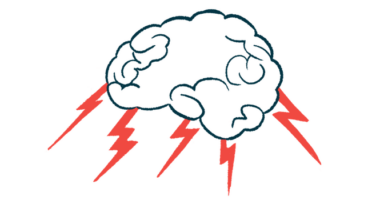Worse fatigue tied to more pain in people with Sjögren’s, study finds
Symptoms shown to amplify each other, reducing quality of life for patients

The severity of fatigue experienced by people with Sjögren’s disease affects their pain severity, and also has an impact on the effect of external factors, such as weather changes and loud noises, that can amplify a patient’s pain.
That’s according to the findings of a single-center study in Italy, which demonstrated that worse fatigue was linked to more pain, and that external factors reported to worsen pain had even greater effects among patients with more fatigue. Fatigue, defined by the researchers as “a physical or mental feeling of exhaustion,” is a symptom that affects approximately 7 of every 10 people with Sjögren’s, per the team.
Worse pain was also significantly associated with higher scores on EULAR Sjogren’s Syndrome Patient Reported Index (ESSPRI), a standard symptom measure. Such higher scores, seen in domains of pain, fatigue, and dryness, indicate worse symptoms.
“Our data not only underlines the complexity of the clinical picture in SD [Sjögren’s disease] but also reinforces the mutual relationship of symptoms amplifying each other and contributing to the [quality of life] reduction,” the researchers wrote.
The results also suggested that the McGill Pain Questionnaire, used to assess pain in this study, is a valuable tool for understanding the individual pain experience of Sjögren’s patients, which may help establish personalized treatment strategies.
The study, “Pain and its relationship with fatigue in Sjögren disease: an Italian single-centre experience,” was published in the journal EULAR Rheumatology Open. EULAR is the European Alliance of Associations for Rheumatology, a nongovernmental organization that seeks to ease the burden of rheumatic and musculoskeletal diseases for patients.
An autoimmune disorder, Sjögren’s primarily affects the glands that produce tears and saliva, leading to symptoms of dryness in the eyes and mouth. Patients also frequently experience fatigue and pain, which can affect their quality of life. Many, but not all, individuals with Sjögren’s test positive for self-reactive antibodies that are thought to contribute to the disease.
“Overall, patients with SD have a low quality of life (QoL) in the physical, emotional, and social dimensions evaluated by different instruments,” the researchers wrote. “This results from a combination of pain, fatigue, dryness, and [simultaneous health conditions], including depression, anxiety, or fibromyalgia.” Fibromyalgia is a condition marked by widespread body pain.
Seeking to learn more about pain and fatigue in Sjögren’s
In this study, researchers at a hospital in Italy sought to learn more about the features of pain, including how pain is affected by daily activities and how fatigue influences pain in people with Sjögren’s.
To that end, the team analyzed data from 144 people with the disease. All were experiencing pain, but had no simultaneous diagnosis of fibromyalgia. The participants had a mean age of 63, and were mainly women (97%). Their mean disease duration was six years.
Pain was assessed with the McGill Pain Questionnaire, a measure that allows patients to specify their pain experiences by choosing the best descriptor across sensory intensity, emotional impact, and cognitive evaluation of pain. The score ranges from zero (no pain) to 78 (severe pain).
The mean pain score on McGill was 35.5. Higher scores were significantly linked to higher ESSPRI scores, reflecting worse symptoms, often pain, fatigue, and dryness. Higher pain scores were also significantly linked to worse fatigue, as assessed using the validated FACIT Fatigue Scale.
[According to the researchers,] we could speculate that fatigue and pain are strongly connected, independently of the type and the cause of pain.
The researchers noted, however, that pain scores were not associated with age, self-reactive antibody status, disease duration, or disease activity, as assessed with the EULAR Sjögren’s Syndrome disease activity index (ESSDAI) and ClinEDSSAI.
Slightly more than two-thirds of participants had joint involvement, and this subgroup had higher ESSDAI pain scores (6.3 vs. 4.7) and McGill scores (35.7 vs. 26.6) compared with those without joint manifestations.
People with joint involvement also chose different domains and descriptors for pain on the McGill questionnaire, “highlighting that different [disease-associated] mechanisms of pain may lead to a different perception of pain,” the team wrote.
Fatigue levels were similar between patients with and without joint manifestations. Thus, according to the researchers, “we could speculate that fatigue and pain are strongly connected, independently of the type and the cause of pain.”
Researchers urge use of McGill Pain Questionnaire for future studies
Worse fatigue, as assessed with the FACIT Fatigue Scale, was significantly associated with higher McGill scores, regardless of age, sex, and disease activity. Additionally, individuals with higher ESSDAI fatigue scores chose different domains and descriptors of pain on the McGill questionnaire, compared with those with lower fatigue scores.
“This implies that the severity of fatigue affects not only the severity of pain but also its features,” the researchers wrote.
Participants were also asked which activities affected their pain. As many as half reported that sleep or rest, and mild exercise, lessened pain, while up to 82% said that cold, damp weather changes, fatigue, and tension increased pain. Sexual intercourse was reported to worsen pain by 30% of participants.
The individuals reporting that their pain was worsened by fatigue had more severe fatigue as assessed by the ESSDAI and FACIT Fatigue Scale, compared with those whose pain was not affected by fatigue.
The researchers also noted that the effect of external factors on pain worsening — such as weather changes and loud noises — was more significant in participants with higher levels of fatigue.
“Altogether, our data confirm that symptoms, but not age, age at diagnosis, disease duration, [antibody] status, or disease activity, were the main predictors of low [quality of life],” the researchers wrote.
The team noted that “the McGill Pain Questionnaire may not measure all relevant aspects of pain,” but nonetheless proved to be a useful assessment tool. As such, it “should be used to better understand the individual’s experience of pain and establish tailored pharmacologic and nonpharmacologic strategies.”







